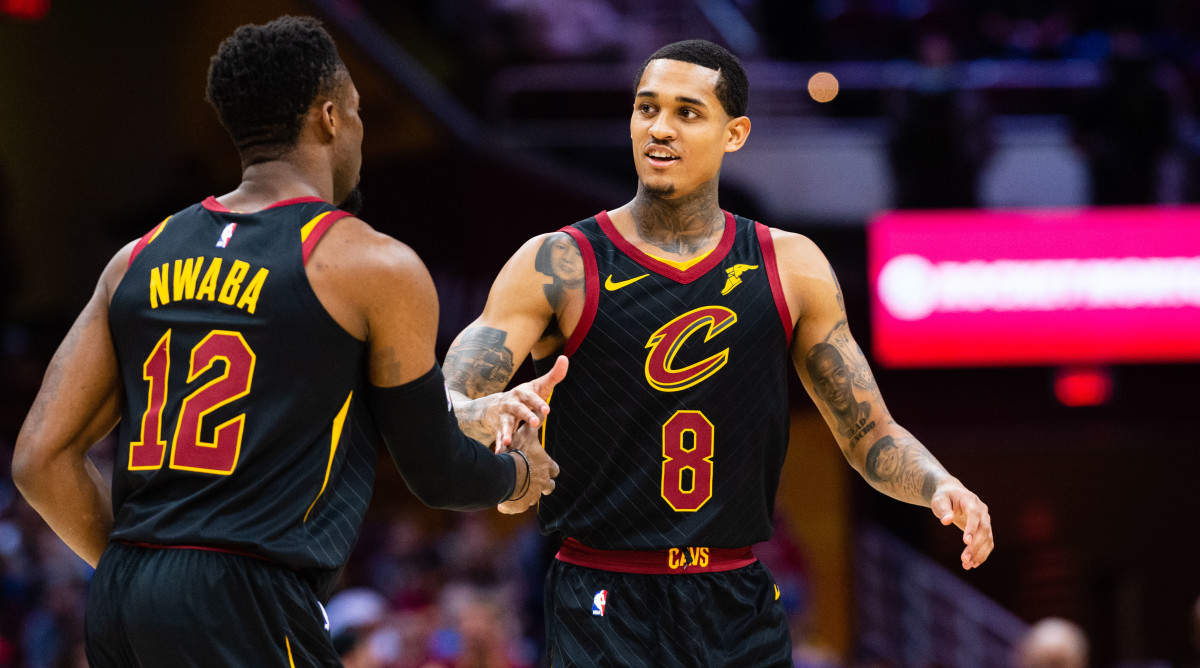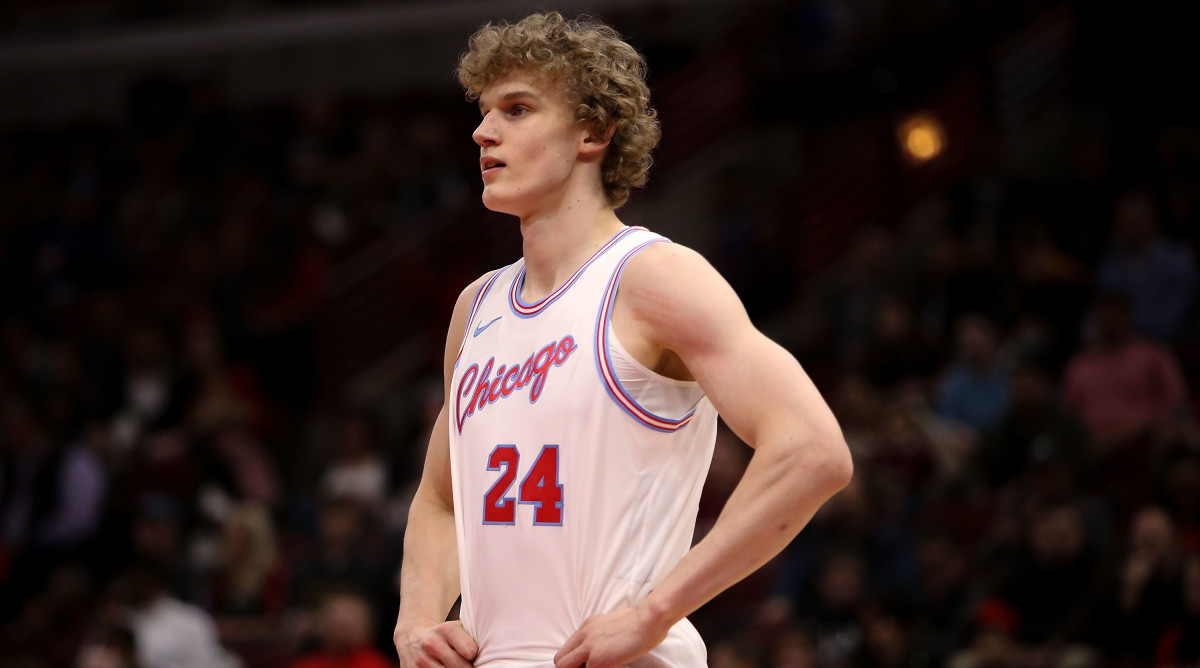New Year’s Resolutions for the NBA’s Worst Franchises

The race for postseason seeding will be fierce once the calendar turns to 2019, with 14 teams in the West competing for eight spots while the top five teams in the East jockey for position. But the postseason excitement come March and April will be non-existent in a handful of cities. Phoenix is the lone West team buried in the playoff standings, while out East, there are four teams that have relegated themselves to the bottom, ready for a 2019 tankapalooza as the season draws to a close. We’ll give the Wizards a pass for now given their relative pedigree, yet that could change if Washington’s situation continues to devolve.
FISCHER: Tum Tum Nairn Brings Unbridled Energy to Suns Staff
So as we turn the page to 2019, we can now paint a fairly clear picture of the league’s bottom five. The Suns are joined by the Cavs, Knicks, Bulls and Hawks, all trying to stack the lessons if not the wins as the season trudges on. What will be on each team’s agenda to close a less-than-stellar season? Here’s The Crossover’s New Year’s Resolutions for the worst NBA franchises.

Cavaliers: Find Their Core
One year after LeBron left Cleveland for Miami, the Cavaliers' future became clear. Cleveland selected Kyrie Irving with the No. 1 overall pick, hitching its wagon to the dynamic point guard with a lethal crossover and big-game mentality. Returning to the postseason felt a mile away, but at least the key building block was in place.
The same can’t be said for this iteration of the Cavaliers. Kevin Love’s injury woes have kept him from steadying the ship—and have effectively killed Dan Gilbert’s idea of competing in the East—while Jordan Clarkson has free reign over the offense. The results have been dispiriting. Cleveland is last in defensive rating and 24th in offense, sitting last in the East at 8–27. A nice season from Tristan Thompson hasn’t been enough to turn the tide.
So is the Cavs’ future core currently on the roster? Finding the answer will be Cleveland’s mission over the next four months. Ideally Collin Sexton would be the team’s future cornerstone after being selected with the No. 8 pick in June, but the returns have been confounding thus far. Sexton is shooting 37.3% from beyond the arc, but that number can be misleading. He’s largely a non-entity outside 16 feet. Teams are sagging as far as they can, daring the Alabama product to fire away or bury his head into traffic. Sexton is more-than-comfortable settling for a mid-range two. Paired with Clarkson, the virus has swept Cleveland.
SHARP: The Case for Kevin Durant to Join the Lakers
Sexton isn’t in the same class as Trae Young or Doncic as a passer and will have to hone his shoddy instincts. He doesn’t seem to find the roller often enough, and skipping the ball crosscourt is rarely an option. So far Sexton has played more as a complimentary piece. He could make a significant progression, but he’s been unable to match the dynamism of other young guards at this point.
Who on its current roster would Cleveland look to pair with Sexton going into the next decade? There aren’t many candidates. Love will be in Cleveland for the next three seasons, yet his injury issues bring questions regarding his effectiveness moving into the 2020s. Don’t expect Clarkson, Rodney Hood or Alec Burks to be there long-term. Larry Nance signed an extension in October. He’s a nice rim runner and interior defender, yet he’s gone from a Thompson clone to a decent piece with Sexton replacing James as the primary ballhandler. The free buckets are few and far between without James's otherwordly vision.
Cedi Osman has shown flashes despite a poor season from beyond the arc. The Macedonian is a ball of effort and energy for an often-listless roster, a lanky and lithe defender across four positions. His offensive profile is growing. He’s more controlled driving to the tin, and he’s a quality diver and cutter inside—count me as an Osman optimist.
Cleveland should be in no rush to rebuild despite Gilbert’s protestations. The roster as presently constructed is the worst in the conference. A pair of top five selections in the next two years should help matters. In the meantime, the Cavaliers need to find the first-wave of post LeBron pieces, giving them every chance to grow in 2019.
Knicks: Tread Carefully with Kristaps
The cast of characters at MSG provide significant effort each night, a compliment to David Fizdale after two uninspired years under Jeff Hornacek. Allonzo Trier is a burst of scoring energy off the bench, while Mitchell Robinson is a rim-running five with tree limbs for arms. The secondary pieces have the outline of a workable bench. But the premier players moving forward are presently unclear.
New York’s future core could be built through free agency, with Kevin Durant taking his talents to Manhattan in July. But banking on the game’s No. 2 player is a risky proposition. If Durant—or the rumored combo of Kyrie Irving and Jimmy Butler—pass on playing for James Dolan, Kristaps Porzingis will be the Knicks headliner in 2019-20 as long as he’s healthy.
The Zinger is currently out of New York’s lineup for the significant future, nursing a torn ACL suffered in February. There’s a temptation to bring back the former No. 4 overall pick in the second half of the season to display his health and considerable talent for prospective free agents. The Knicks must resist that urge. An offseason workout video can serve as the evidence of Kristaps’s bill of good health just as a meaningless March contest will. If Porzingis isn’t ready 100% in 2018-19, keeping him on the sidelines is of utmost importance. Plus, the more time Kristaps spends out of uniform, the better New York’s lottery odds will be when the ping pong balls flutter in May.

Bulls: Don’t ruin the young frontcourt
Fred Hoiberg’s tenure in Chicago unceremoniously ended on Dec. 3, and in stepped interim head coach Jim Boylen. The 53-year-old has taken the Bulls back to high school in his short reign, complete with lengthy practices off back-to-backs and harsh conditioning drills. The results have been as expected. The Bulls nearly staged a mutiny on Dec. 10, and are currently playing without joy or direction. It’s been a bleak start to the winter in the Windy City.
MAHONEY: The Davis Trade Hype Was Years in the Making
Yet despite the relative misery, not all is lost in Chicago, in large part due to the Bulls’ dynamic pairing of youngsters in the frontcourt. Lauri Markkanen and Wendell Carter are the building blocks of the Bulls’ future, already displaying a canny two-man game early in their careers. Carter is a deft passer, quick to find a rolling Markkanen as he dives into the paint. Most teams don’t carry two bigs mobile enough to hang with Chicago’s kids, especially with the stretch Markkanen provides while canning 39% of threes in 2018-19. Carter’s early development has made Jabari Parker superfluous in the first 30 games. The Bulls could very well ship the former No. 2 overall pick by the trade deadline. If not, Parker’s $20 million option for 2019-20 will likely be declined.
Markkanen and Carter are relegated to the background on some nights, forced to watch Zach LaVine and Kris Dunn cough up contested jumpers. Perhaps Boylen can rid Chicago on its shot selection woes, although his outdated methods have thus far bred greater resentment than results. Regardless, Chicago’s goal to close the season is clear. Reform the flow of its offense, and let Markkanen and Carter blossom as the key cogs in the Bulls attack.
Hawks: Let Trae Young live and learn
Atlanta has perhaps the least incentive of anyone to compete as the calendar flips to January. There are no free agents to woo, no clinging to respectability in the post-LeBron era. Atlanta needs an influx of talent, plain and simple. Another top-five selection should do the trick, and perhaps land the Hawks a transcendent running mate next to Trae Young.
Playing through the Oklahoma product seems to be a successful losing strategy thus far. Atlanta has a minus-11 net rating with Young on the floor, outscored by 7.6 points per game. He’s shooting 25.4% from three and just 38.2% from the field. Young is one of three players this season to shoot worse that 40% with 14-plus shot attempts per game, joined by Eric Gordon and Tim Hardaway. He’s the only one to do so while making under 30% from three.
WOO: Zion Stays at No. 1, Guards Climb Rankings
So maybe Young hasn’t become Steph Curry 2.0 in his rookie campaign, but the signs on a quality starter are there. Young isn’t afraid to launch from behind the arc. He’s generally undeterred by oversized bigs near the tin, showing a craftier interior game than assumed before the draft. Young is making 51.4% of shots within five feet, a better mark than Kemba Walker. His 2.7 per game baskets within five feet are more than Steph Curry, Victor Oladipo and fellow rookies Doncic and Sexton.
Young’s passing wizardry from the Big 12 has translated to the NBA. He’s improved his vision in traffic, and even at a poor percentage, his gravity beyond the arc shifts defenses into favorable passing lanes. Young’s head is up in transition, and he’s forming a budding rapport with John Collins. With its point guard in place, Atlanta can now build its roster.
There will be plenty of mistakes and eyesore stat lines for Young in 2019, especially if he continues to let it fly from 25-plus feet. But the string of errors will be best for Atlanta in the long term. Young should grow from his foolish early years into a quality guard, and in the immediate future, pile up the losses as the lottery draws near.
Suns: Nurture Deandre Ayton
The Suns have survived a disastrous start to tread water over the past two weeks, going 5–2 since Dec. 13. Ayton’s steady improvement has been a large reason why. The No. 1 pick had his best night as a pro against the Celtics on Dec. 19, displaying the power and mobility that salivated Phoenix scouts before the draft. Ayton hasn’t been a late-game killer like Luka Doncic, but he’s quietly had an impressive rookie season. The Arizona product is one of six rookie centers since 2000 to average 15 points, 10 rebounds and one block per game, joining recent high-prized picks Karl-Anthony Towns and Joel Embiid. Ayton's been the offensive force many expected following his freshman year.
The other side of the ball has been concerning to say the least. Ayton has largely been a dreadful defender, lost in the pick-and-roll. He’s timbered while getting crossed-up by Darren Collison, who isn’t exactly Kemba Walker with the handle. Ayton’s technique thus far hasn’t been passable, and the instincts are invisible far too often. It’s not fair to expect Ayton to defend on the island, but he should be able to passably corral most guards as they approach the paint. He’s far from a lost cause defensively at 20-years-old. But you’d hope he’d be more serviceable as a rookie.
Even with the defensive woes, the glimpses of offensive dominance make Ayton as a true building block next to Devin Booker. If Ayton emerges from 2018-19 as the best big in his class, things will be looking up in the desert. If the struggles compound, Phoenix will increasingly rue its decision to pass on Doncic.
